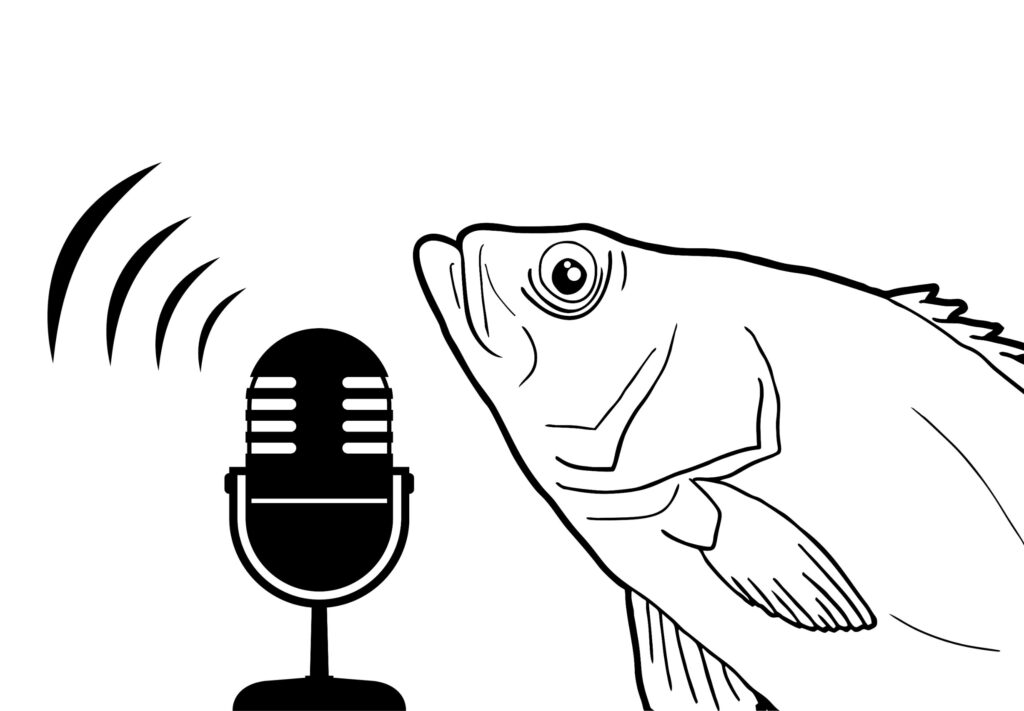The goliath grouper has the ability to make a loud, booming sound. Goliath might utilize it to defend its territory or court. This booming noise is known as “grouper rumble.”
Why Does Grouper Rumble?
During the spawning aggregation, some groupers make species specific sounds related to courtship. They traverse huge distances by swimming and cluster in large numbers for mass spawning at specified times and locations. The groupers often share this common reproductive method.
Like many other fish species, goliath groupers also make sounds with the help of their swim bladders. Around 60 hertz is the typical frequency range. When the fish are reproducing, and occasionally when scuba divers approach them, they make a sound. Divers have compared the sound made by Goliath groupers to a “sonic boom” beneath the water.
This behavior shows that goliath groupers create vocalization booms in reaction to threats that are distinct from vocalizations for other purposes, such as enticing mates. The discovery that other groupers use auditory communication to indicate agonistic behavior supports this behavior.
Two aggregation locations in the Gulf of Mexico off the southwest coast of Florida that are most likely spawning sites were evaluated for goliath grouper sound production based on the presence of fish. Goliath grouper mostly made low-frequency, single-pulse sounds, with the main frequencies centered around 60 Hz. The production of sounds occurred most frequently between 1:00 and 03:30 hours. With reduced levels for several days around the full moon, sound output had a lunar periodicity.

How Does a Goliath Grouper Produce a Sonic Boom?
Fish have a variety of ways to make noises, and they occasionally combine multiple techniques, much like an orchestra conductor would choose instruments to create the perfect sound. Grunts, for example, are fish that make sounds essentially by grinding their teeth together. Although many fish make sounds, the goliath grouper, which can weigh up to 700 pounds, makes distinctive low-frequency noises during mating and when divers approach it, perhaps out of despair. Their “boom” sounds are acoustically different from those of other grouper species. The goliath grouper also exhibits “inquisitive” tendencies and inspects strange objects that are encroaching on their environment. It behaves like many higher-order, and territorial predators do.
The goliath grouper may produce a characteristic underwater rumbling sound by contracting its swim bladder muscles. These noises, which are thought to be the booming sounds of territorial behavior, are created to give off a warning if the animal feels threatened. Juvenile goliath groupers use the rumbling sound to startle small prey, according to research.
Damselfishes appear to have an especially complicated system of noises that, when combined with specific body movements and postures, form the foundation of intricate social networks. This is probably merely a result of them being researched the most. When approaching a possible predator, damselfishes make the most noise, as appears to be the case for the majority of other fish species that use sound communication.
Barking Fish
The “barking fish” is another name for Goliath groupers. This is due to the fish’s strange, booming sound, which can be felt as well as heard and is somewhat akin to a bass drum. These sounds are typically referred to as “barks.” Barks are either used for communication or to alert potential intruders attempting to enter their territories.
The big, calm, brown fish with mottling typically ignore divers or swim away when they get close. However, they might swim up to you if you remain motionless on the bottom. They make a sonic boom from the back of their throats when they are angry or scared. The goliath grouper frequently sounds like an underwater bass drum concert when there are many divers nearby.
The Sound of the Sea
Sound can be an extremely efficient way of communicating over both short and long distances since sound waves move almost five times faster underwater than they do in the air. Up to 300 different types of fish have been found to make sounds of some sort. Sea robins sing, toadfish whistle or make high-pitched “foghorn” noises, squirrelfish grunt, drums-well-drum, and groupers will actually boom at you if you catch them off guard or bother one.
The frequencies used by many fish sounds are too low for unaided human detection, but the booming of a grouper is difficult to miss. The sonic boom produced by a large grouper, such as a Goliath grouper, can startle anyone. When a grouper booms at you, move back to give it some room and show some respect. In addition, you really don’t want to get hit by any grouper, much less one that appears to be about the size of a Volkswagen.
Goliath Grouper
The ruler of its realm is the Goliath grouper. The largest grouper species in the world inhabit the reefs and shipwrecks off the coast of South Florida, where it does, well, whatever it wants. The Goliath grouper, one of the reef’s largest inhabitants, eats whenever it wants. Anywhere it wants, it swims. Whatever it is curious about, it investigates.
The giant grouper was once fairly common and extremely visible in several sections of its range. It is a tropical to subtropical fish that inhabits rather shallow waters. The western Atlantic Ocean contains goliath grouper from Florida to Brazil, as well as the Gulf of Mexico and the Caribbean Sea. The Goliath grouper has that option and can weigh up to 700 pounds. Since this fish is so large, not even sharks can harm it. There have been reports of Goliath groupers making a booming, loud barking noise that can be heard on the ocean floor for a very long distance.
Bottom Line
-
- It’s possible that the goliath uses its swim bladder to produce an audible underwater “bark” that sounds more like a mini-sonic boom. Divers frequently hear the distinctive grouper rumbling. Sharks can be frightened away by grouper rumbling.
-
- The Goliath grouper is an important fish in Florida waters because its presence serves as a gauge for the condition of the region’s coral reefs. The fish rumble when they are spawning and occasionally when scuba divers are near them.











